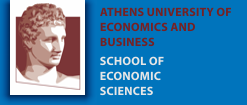| Abstract |
The agricultural sector contributes to global greenhouse gas emissions while facing pressures to meet nutritional needs of the growing population. Reducing post-harvest food losses represents an underappreciated path to achieving net-zero emissions without requiring radical changes in production systems. In this study, the Food, Agriculture, Biodiversity, Land-Use, and Energy (FABLE) Calculator simulates post-harvest loss (PHL) reduction scenarios, assessing their socioeconomic and environmental impacts. We model five pathways: a business-as-usual pathway entitled Current Trends, two scenarios with 25% and 50% PHL reductions, and two National Commitments pathways, combining PHL reduction with other policies. Results show that reducing PHL alone lowers production needs and costs by increasing supply chain efficiency. However, only the NC-25% pathway achieves greater cost savings and emission reductions, underscoring the value of combining supply- and demand-side interventions. Ultimately, this study underscores that reducing post-harvest losses is linked to achieving many SDGs and is essential for transitioning to more sustainable agri-food systems. |

